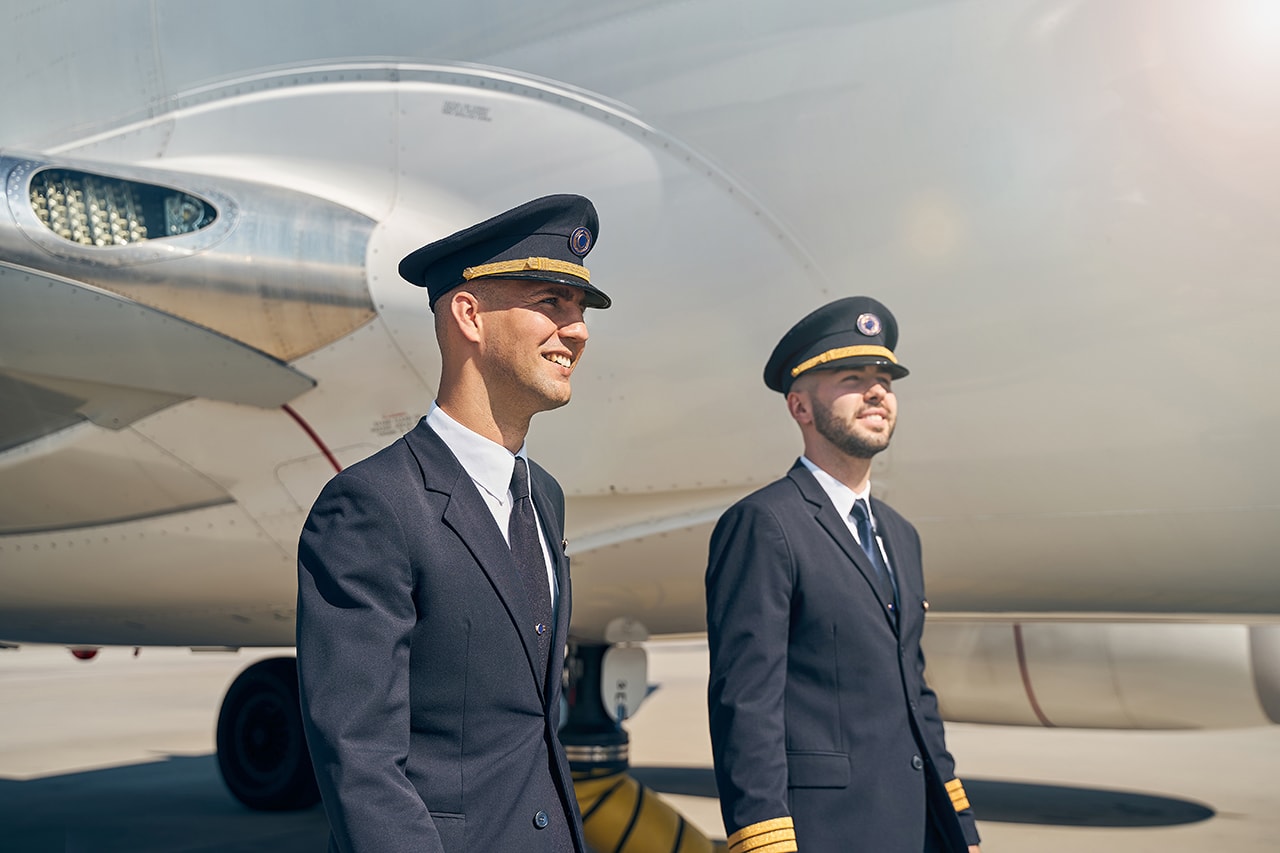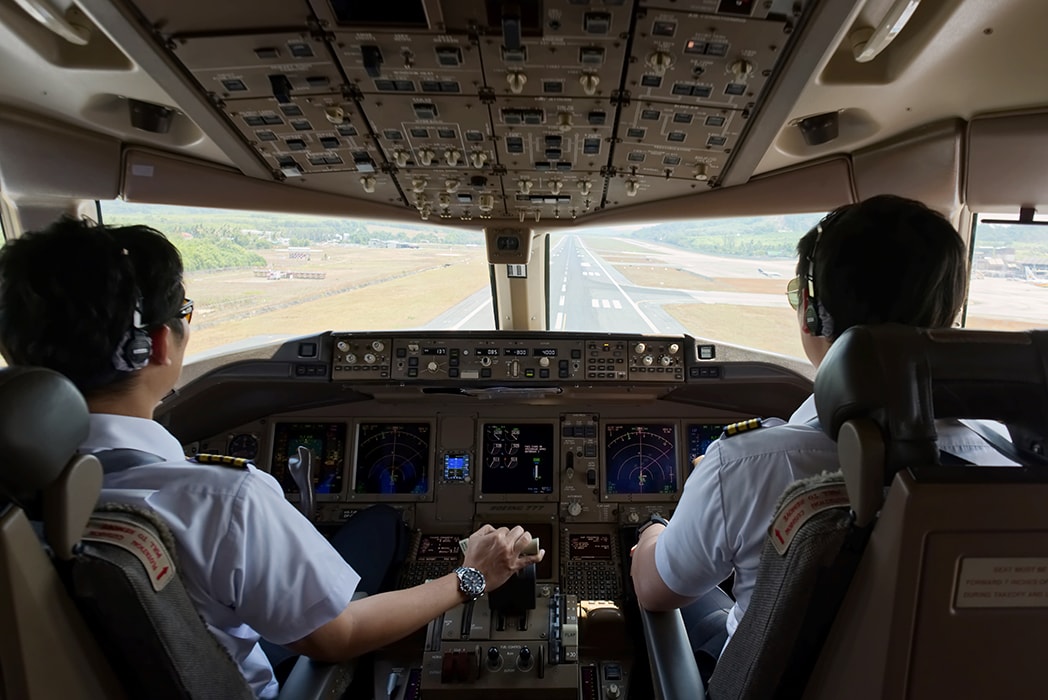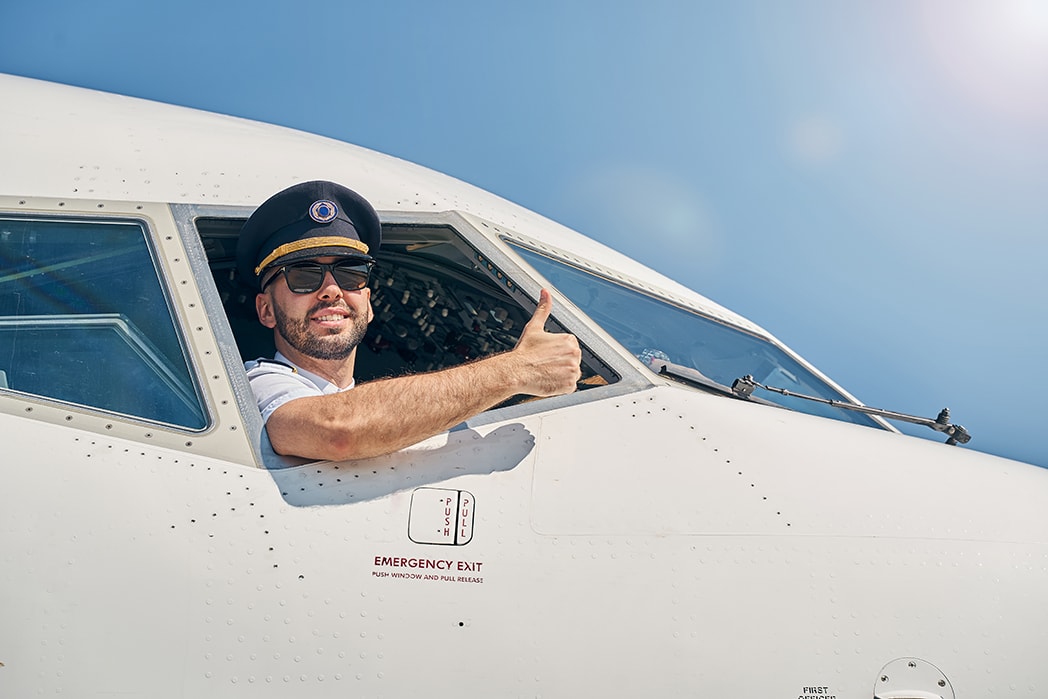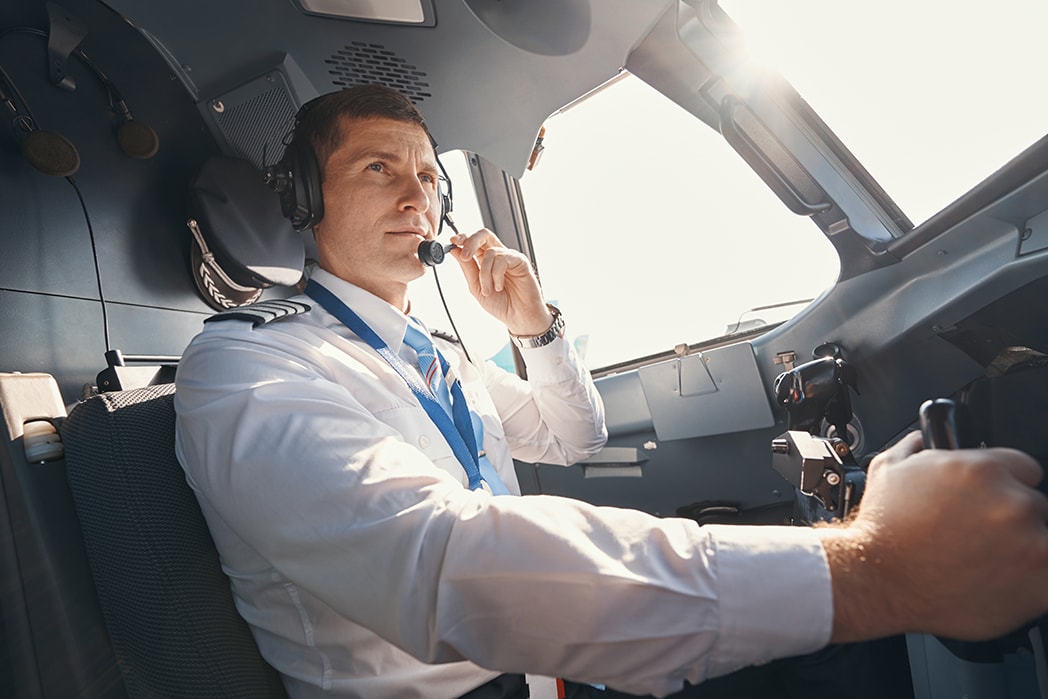Part 61 Commercial Pilot Requirements: Essential Guide
Aug 20, 2025
If you want to become a commercial pilot under Part 61 you need to know the requirements. That includes eligibility, flight hours and other qualifications.
In this article we will break down everything you need to meet the Part 61 commercial pilot requirements.
Key Takeaways
-
To get a Part 61 Commercial Pilot Certificate you must meet the eligibility criteria which includes being at least 18 years old and having a private pilot certificate.
-
You must accumulate a lot of aeronautical experience, at least 250 hours of flight time, 100 hours of pilot in command time, and additional requirements for cross country and solo time.
-
Mastery of advanced aircraft systems and instrument flying and preparation for the practical test to show proficiency in different flight scenarios.
Eligibility Criteria for a Part 61 Commercial Pilot Certificate
So you want to be a commercial pilot candidate? First you need to meet certain eligibility criteria. Age is 18 years old. But age is just a number, it’s your skills and knowledge that counts.
English proficiency is another requirement, clear communication is key in aviation. Imagine navigating complex airspace and talking to air traffic control being fluent in English will make it easy for you, especially when operating in or near an operating control tower.
Another milestone on your journey is having a private pilot certificate. This is a prerequisite to ensure you have some flying experience and knowledge.
If you’re just getting started, understanding private pilot requirements part 61 is the essential first step toward working your way up to a commercial pilot license.
Before you can even apply for a commercial pilot certificate you need to have shown you can fly an aircraft safely and proficiently as a private pilot which is a requirement for commercial pilot privileges.
Meeting these eligibility criteria is the first step to achieving your dream. Each requirement is building blocks for your success as a commercial pilot.
As you go along remember these initial steps are laying the foundation for your success. Now let’s get into the aeronautical experience needed to move to the next level.
Required Aeronautical Experience Under Part 61

To qualify for a commercial pilot certificate under Part 61:
-
250 hours of flight time (190 hours if you go through a FAR part 141 program, which follows a structured and FAA-approved training curriculum)
-
100 hours of pilot in command time
-
50 hours of pilot in command time in an airplane
Applicants must log at least the minimum required hours in each category to qualify.
This amount of flight time consists of a total of the experience needed to prepare you for the demands of an airline pilot as a commercial pilot. These requirements apply to anyone who applies for a commercial pilot certificate.
Solo flight time is also required and consists of a total of at least ten hours, including cross country and night flying.
This solo time helps you develop your skills and build your confidence as a pilot. Flight time performing specific tasks, such as instrument or night flying, must be documented as part of the experience requirements.
Cross country time is also required, 50 hours minimum, 10 hours in an airplane.
The applicant must complete hours in cross country flights, including at least one cross country flight of a distance of at least 100 nautical miles straight line distance from the original point of departure, and the total straight line distance for required flights must meet regulatory standards.
At least one hour cross country flight must include a minimum of three points of landing.
Certain training or flight experience must be completed within the preceding 2 calendar months before the month of the test. Credit for some requirements may be given if the applicant completes an approved commercial pilot course.
Pilot in command flight experience is required and must be properly logged.
Logging Time in a Flight Training Device
Flight training devices (FTDs) are a big part of your training. The FAA allows you to log time in these devices under a Letter of Authorization for a commercial pilot certificate. They simulate the experience of flying a real airplane, so you can train without a real plane.
You can log up to 50 hours in an FTD, which is great for training under specific conditions or practicing maneuvers over and over.
But the training device must be for the same category of aircraft as the certificate, so the skills you develop will be directly applicable to the airplane you’ll be flying.
FTDs help meet flight time requirements and make your training more fun. They’re designed to mimic real world scenarios so you can practice and perfect your skills in a controlled environment.
As you go along, those logged hours will be proof of your dedication and proficiency.
Specific Flight Requirements for Single Engine Airplane

Single engine airplanes have specific requirements for obtaining a single engine class rating and airplane single engine rating. You need to have at least 100 hours total time in powered aircraft, with 50 hours in airplanes. This gives you a lot of experience in single engine rating airplanes.
Cross country time requires at least 50 hours cross country, 10 hours in an airplane. These flights hone your navigation skills and get you ready for commercial aviation. During the checkride you must demonstrate proficiency in performance maneuvers such as:
-
Steep spirals
-
Chandelles
-
Lazy eights
-
Eights on pylons
-
Takeoffs and landings in the traffic pattern
Training in a technically advanced aircraft (TAA) helps a lot. These aircraft have advanced avionics and systems, making it a more comprehensive training. If the aircraft is equipped, training may also include experience with a controllable pitch propeller.
Flying a technically advanced airplane gives you hands-on experience with modern avionics that are common in commercial operations. Instructor feedback during practice flights is key to identifying areas to work on and to be fully prepared for the practical test.
Multi-Engine Airplane Requirements
This section covers the requirements for obtaining a multiengine class rating.
Moving to multiengine airplanes brings new challenges and requirements. If you’re adding a multiengine class rating to an existing pilot certificate, no knowledge test is required. You’ll need around 10-15 hours in a multiengine airplane for checkride prep.
Training may include time in a multiengine complex airplane, which features advanced systems such as retractable landing gear, flaps, and a controllable pitch propeller.
If you’re pursuing a multiengine seaplane rating, you must complete specific training in a multiengine seaplane, including meeting the requirements for a multiengine seaplane rating, which often involves flight experience in seaplanes equipped with flaps and controllable pitch propellers.
Operational proficiency in a multiengine airplane is key. This must be shown during the checkride.
This means understanding the engine control system consisting of multiple components and managing the airplane in various flight conditions. Master this and you’ll be safe and efficient in the multiengine complex airplane.
Instrument Training and Cross Country Flights
Instrument training is part of your commercial pilot certificate and requires 20 hours of structured training, 10 hours of which must be instrument training.
This training teaches you to fly under instrument flight rules (IFR) which is a critical skill for commercial pilots. Instrument training also includes maintaining proper flight attitudes and intercepting navigational signals, both essential for safe and accurate flight.
The instrument training must include 10 hours of training with a view limiting device, covering attitude instrument flying and intercepting navigation systems. Mastery of flight attitudes and intercepting navigational systems is emphasized throughout this training.
You must also demonstrate partial panel skills which are critical for managing instrument failures in flight. These skills will give you the confidence to handle any situation.
Skills recovery from unusual flight attitudes is especially important, as it prepares you to regain control in unexpected scenarios.
Cross country flights are another requirement. You must do at least one 2 hour cross country at night with 3 points. These flights test your navigation skills and ability to manage longer flights. During training, pilots must also demonstrate recovery from unusual flight attitudes to ensure proficiency in handling abnormal situations.
One of the key planning elements includes returning to the original point of departure, which reinforces route efficiency, fuel management, and real-world flight planning accuracy. Pilots must carefully monitor the miles from the original departure point to maintain accurate situational awareness throughout the flight.
Night flying adds an extra layer of complexity and you will have to rely more on your instruments and navigation systems.
Navigation is a core component of commercial pilot training. Intercepting and tracking navigational systems is a required skill for commercial pilot candidates, ensuring precise route management and safe operations.
Combining instrument training and cross country flights will make you a well rounded and ready for commercial aviation. These experiences will build your confidence and proficiency and make you a more capable and versatile pilot.
Preparing for the Practical Test

Practical test prep requires you to know the areas of operation listed in the test standards. This is a combination of theory and hands on training so you can show the required skills on the day.
Review the common tasks and maneuvers in the practical test to boost your confidence and preparedness.
During the test you must:
-
Recognise and recover from unusual attitudes as per ACS.
-
Make sound decisions especially in emergency scenarios.
-
Get endorsements from an authorized instructor before taking the test for a multi engine rating. An authorized instructor must provide the necessary endorsements to confirm you are prepared for the practical test.
-
Demonstrate precision during various flight scenarios, including a landing involving a flight, which showcases your ability to manage the aircraft through approach, descent, and touchdown safely.
Proper prep is key. Review all the materials, practice your maneuvers and get instructor feedback. This will help you walk into the test with confidence.
If you are aiming to obtain an airplane multiengine rating, focused preparation on multi-engine specific procedures and systems is essential to demonstrate proficiency and safety.
Skills Recovery and Unusual Flight Attitudes
Unusual flight attitudes are extreme pitch or roll configurations that are not normal flight, and will lead to loss of control.
Recognizing and recovering from unusual attitudes is a skill all commercial pilots should have. There are two main types, nose high and nose low, with spiral dives being the most hazardous.
For a nose high attitude you should apply full power, level the wings and push forward on the control column to recover.
For a nose low attitude you should reduce power immediately, level the wings first and then ease out of the dive. These are the keys to control and safety of flight.
Commercial pilot training includes recovery from unusual attitudes and intercept with a limited view. Common mistakes in attitude recovery are misidentifying the attitude and fixating on one instrument.
A limiting device including attitude is essential for attitude instrument flying partial, especially when visual references are absent.
This is where partial panel skills recovery becomes crucial, ensuring that pilots can safely regain control using limited instrumentation.
Advanced Aircraft Systems Knowledge
Knowing modern aircraft systems is important especially if you fly turbine powered aircraft. Training in a turbine powered airplane is often required for advanced commercial pilot ratings, as it provides essential experience with turbine-powered flight systems and operations. You need to know:
-
Electrical systems
-
Lubrication
-
Cooling systems
-
Other critical turbine engine components such as authority digital engine control (ADEC), which offers precise, automated management of engine functions for improved efficiency and reliability.
Training in a technically advanced aircraft (TAA) develops automation proficiency which is critical for commercial aviation.
The FAA defines TAA as an electronically advanced avionics system that enhances pilot efficiency and safety. The move from traditional complex aircraft to TAA has made flight training more accessible and affordable for aspiring commercial pilots.
Pilots training in TAA get to experience automated flight controls which are common in commercial and airline operations.
TAA reduces risk by providing real time data on aircraft performance and environmental conditions. Knowing your aircraft systems is key to practical performance and passing the checkride. This knowledge will get you ready for modern aviation.
Navigational Systems and Instrument Flying
Tracking navigational systems is key to instrument flying. Intersecting and tracking navigational systems is a commercial pilot skill. Commercial pilot courses focus on instrument flying and navigational system tracking.
Partial panel skills are essential for unexpected instrument failure during flight. Developing proficiency in flying partial panel skills ensures you can maintain control and navigate accurately even when critical instruments fail.
Understanding advanced aircraft systems gives you situational awareness with modern avionics like glass cockpit displays and GPS navigation, partial panel skills and electronic primary flight display, partial panel skills and instrument flying partial panel.
These skills and knowledge will get you ready for modern aviation.
Tips for Passing Your Checkride

Knowing the checkride process and stages helps with the prep. Key points to prep:
-
Oral exam answers should be clear and concise.
-
Categorize info into must-know and reference.
-
Get proper rest and stress management for checkride day.
Examiners are looking for safety, and proactively identifying risks shows you’re prepared. For the commercial pilot checkride you need to know:
-
Primary and secondary flight controls
-
Powerplant and propeller
-
Landing gear
-
Electrical system
-
Avionics
You must master these.
Missing endorsements or not meeting hourly or flight distance requirements for cross country flights can be a problem. This can result in a ‘hard stop’ during the checkride.
summary
In summary, meeting Part 61 commercial pilot requirements involves meeting specific eligibility criteria, accumulating required aeronautical experience and preparing for the practical test. Each step of the journey, from logging flight hours to understanding advanced aircraft systems, gives you the skills and knowledge to pass.
Becoming a commercial pilot is hard but worth it. Take each step, get guidance from your instructors and stay committed to your goal. With persistence you’ll be flying high in no time, living your dream as a commercial pilot.
